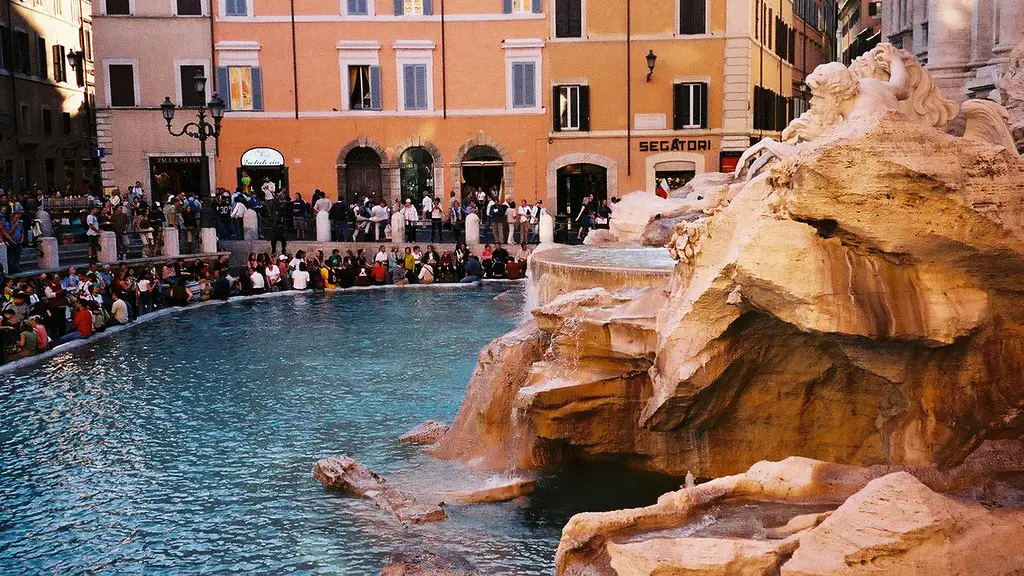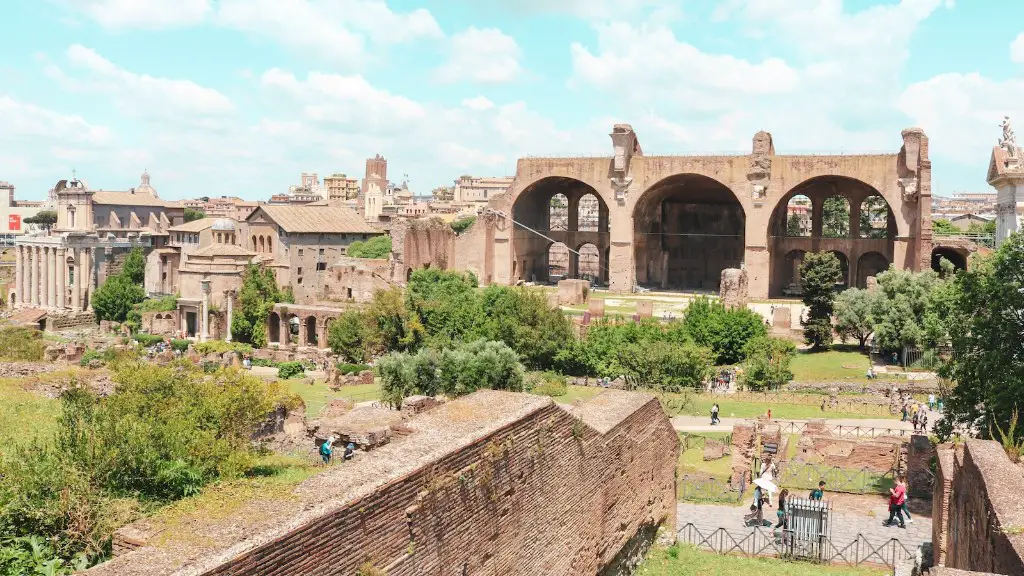The city of Rome was the symbolic heart of the ancient Roman empire and it home to countless emperors during Rome’s imperial era. In a city as vibrant and full of rich history as Rome, every emperor had their own corner of the city to call home. These grand living quarters were often palaces and villas with gardens and lush amenities, each unique and full of the personality of the ruler that lived there.
Emperors of Ancient Rome almost always chose to live in the city of Rome when possible. Julius Caesar was an early innovator in this trend, becoming one of the first Roman rulers to make his home on the Palatine Hill. After Ceasar, the Palatine Hill was home to many other emperors and leaders of the Roman Empire. It was a place of considerable wealth and power for the ones who occupied it and offered a significantly better standard of living than that of the average Roman citizen.
To protect the emperors in their residences, palaces were guarded by several Praetorian guards, who were under the direct command of the emperor himself. Wealthy emperors would also install luxurious bathing facilities, gardens and large courtyards in their dwellings. Inside the palace, opulent decorations, rare artifacts, and elegant furniture all added to the grandeur of the imperial home.
The general public was not welcome in these royal residences, and often they were kept under lock and key while the emperor was away. The imperial family and their courtiers who were invited to the palace to attend special events or ceremonies entered the emperor’s private space through large gates and grand staircases, both for protection and to keep up their important image.
In addition to his main residence in Rome, the emperor would also own villas and estates in other parts of the empire. These luxurious villas and estates became popular among the wealthy Roman citizens, who followed the emperor’s example in owning large estates in different cities. While at these villas, the emperor enjoyed seclusion, country life and time away from the hustle and bustle of the city.
Today, much of the ancient architecture of Rome and the homes of the emperors can still be seen. The ruins of these powerful homes carry the shape of grand ambitions and luxurious lifestyles, inspiring a sense of awe in many who come across them. While at times, the lifestyles of the emperors of Ancient Rome were extravagant, they were also famous for setting the standard of living and creating a lasting cultural impact on the Roman Empire.
Malaria and Mosquitoes
Malaria was a major health concern for both the Roman citizens and the rulers. The mosquito was said to be brought to Rome by merchants from Africa, and it was a constant threat to the people of Rome. To prevent the spread of this disease, the emperor Augustus ordered the construction of sewers and drainage systems in the city so that standing water where mosquitoes could breed would not accumulate. Similarly, the emperor Claudius ordered wells throughout the city so that clean water would be available for the people. Mosquito nets for windows and use of exotic oils to repel them were also commonplace in ancient Rome.
Humid climates such as Rome were prime breeding grounds for the mosquito, and in spite of all their efforts to combat its spread, malaria outbreaks still occurred. As a result, Roman emperors were known to take measures to protect themselves from contracting the disease. They used insect-repellent oils, covered their beds with mosquito nets, and chose to build their grand residences on the higher elevations of Rome to avoid the areas with the highest risk of malaria.
Aqueducts and Sewers
The emperors of ancient Rome understood the importance of having a clean and healthy city. To achieve this, they invested heavily in a network of aqueducts and sewers which would provide a freshwater source for the citizens. The idea was to keep the city clean and hygienic, and to help prevent the spread of diseases, such as malaria. Sewers were also built to remove wastewater away from the city, preventing it from accumulating and resulting in public health hazards. These aqueducts and sewers were some of the first things the emperors had built when taking over the city and are still in use today.
The emperors would also invest in public baths for the citizens, which were built to promote cleanliness in the city. These baths were often located near the main aqueducts and sewers, as it was easy to have a steady supply of clean water from them. The baths would also have hot and cold pools, changing rooms and exercise grounds, making them popular destinations for the citizens.
The aqueducts and sewers of Rome are a testament to the importance that the emperors of the time placed on cleanliness and hygiene. By constructing these, the health of their citizens was improved and the city was able to better resist the spread of diseases like malaria, allowing the citizens and rulers to live more comfortably and securely.
Political Reigns and Dynasties
Every emperor of ancient Rome had a distinct reign and set of policies which marked their stay in Rome. During these times, the emperors of Rome either stayed in the city itself or in a nearby estate. They did this to maintain authority and maintain order and security in the Roman Empire, while also keeping the people in check.
The fall of an emperor could lead to the rise of a new dynasty, and this was often accompanied by a change in residence as well. For instance, after the death of Julius Caesar, Octavian rose to power and founded the famed Julio-Claudian dynasty. The Julio-Claudians built luxurious villas with sprawling gardens and elaborate interiors, which became the models for the elite Roman villa.
The last and most famous of the Roman dynasties was the Flavians, who ruled from 69-96 AD and built their grand palace on the Palatine Hill. This palace was said to be the most opulent and extravagant of all the Roman residences, and it was filled with all the luxuries money could buy. The Flavians left an indelible mark on Rome and the Roman Empire, and their palace remains to this day a tribute to the power and opulence of the Roman emperors.
Decline of Roman Empire
By the third century AD, the Roman empire was already in decline. With a weakened economy and the city of Rome falling into disrepair, the wealthy and lavish lifestyles of the imperial rulers became less and less attainable. As their power and influence diminished, they were forced to make do with less, resulting in smaller and simpler dwellings.
It was during this time that many of the villas of the Roman emperors were abandoned, with the last emperor leaving the Palatine Hill in 395 AD. With no one to maintain them, these grand residences fell into disrepair, leaving us today with the ruins that are still standing.
The decline of the Roman Empire was a time of great change for the city of Rome and its royal residents. Gone were the days of grand villas and luxurious living, replaced instead by a city in ruins and a culture struggling to survive. While these times of hardship were difficult, they also left a lasting legacy, with the ruins of the Roman emperors’ homes still standing today as a testament to their grand ambitions.
Romans in Other Provinces
The emperors of ancient Rome did not just reside in Rome, they also had homes in other provinces. This allowed them to extend their reach and spread Roman culture and language to those provinces. For example, Julius Caesar is said to have had a house in Britain, and it is likely that there were other imperial residences in the provinces as well.
These provincial residences were likely less luxurious than the Roman emperor’s main home in the city. However, they were still large and imposing buildings that served to demonstrate the power of Rome and the status of its ruler. They also served as a reminder to the people of the provinces that they too were part of the Roman Empire and had to follow its orders.
Today, many of these provincial residences are still standing and are a reminder of the power and reach of the Roman Empire. They also serve as valuable historical landmarks and works of art, giving visitors a unique insight into the culture and architecture of the time.
Conclusion
Rome was the city of the mighty Roman Empire and its grand residents. The emperors of Ancient Rome made their homes in opulent palaces and villas, filled to the brim with lavish decorations and artifacts. To ensure their safety, these imperial residences were kept secure and guarded by a team of praetorian guards. Meanwhile, the emperor also built aqueducts and sewers to keep the city clean and prevent the spread of diseases like malaria.
The emperors also had homes in other provinces, demonstrating the reach of their power and the strength of Rome. Much of the architecture of these residences can still be seen today, providing a glimpse into the power and prestige of the Roman emperors.





